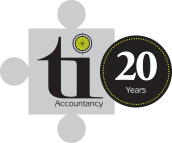Reverse charge system

From March 2021, a VAT reverse charge system for construction services will come into effect which will change how VAT is collected in the building and construction industry. The customer receiving the service will have to pay the VAT due to HMRC instead of paying the supplier. It will only apply to individuals or businesses registered for VAT in the UK (although it will not apply to consumers).
The idea is that this will simplify the charging and recording of VAT and reduce the fraud possibilities that may arise through unscrupulous traders operating VAT illegally. The domestic reverse charge means that in the entire supply chain, VAT is only actually paid by the end customer. All other invoices are issued within the reverse charge system and no VAT changes hands.
Services affected by the domestic reverse charge
The reverse charge will affect supplies of building and construction services supplied at the standard or reduced rates that also need to be reported under CIS. These are called specified supplies. There is an important difference between CIS and the reverse charge system where materials are included within a service. The reverse charge applies to the whole service whereas CIS only applies to the labour cost and no deductions are made on the materials content.
The reverse charge does not apply if the service is zero rated for VAT or if the customer is not registered for VAT in the UK. It also does not apply to some services. These are those supplied to end users or intermediaries connected with end users. Employment businesses who supply staff and who are responsible for paying the temporary workers they supply, are not subject to the reverse charge. A list of the services that the reverse charge applies to can be found here.
Invoicing Quirks
Mixed sale invoices – if an invoice includes both reverse charge work and non-reverse charge work, the reverse charge will apply to all the invoice. However, if the value of the ‘reverse charge’ work is 5% or less of the invoice total, then the normal VAT rules will apply to the invoice.
For example, £600 reverse charge work and £10,000 non-reverse charge work. £600 is 5.7% of £10,600 so the reverse charge will apply to all the invoice. But if the reverse charge work had been £500, then you would need to charge 20% VAT because the percentage of reverse charge work would be 4.8% (£500 / £10,500). The invoice would be for £10,500 + £2,100 VAT and you would be paid £12,600 by the client.
New Dwellings – labour and building materials permanently fitted into a new dwelling are zero-rated for VAT, however, items like carpets would be subject to 20% VAT. In this case the key issue with the reverse charge rules is that the labour is zero-rated, so the invoice is subject to normal VAT rules.
However, if you did not split your labour and materials on your sales invoices i.e., made a single supply and fit charge then the labour is also subject to 20% VAT and HMRC guidance confirms that the reverse charge will not apply.
HMRC have created a flowchart to help you check if the reverse charge applies to you.
If you would like any further clarification, please do not hesitate to contact us.






